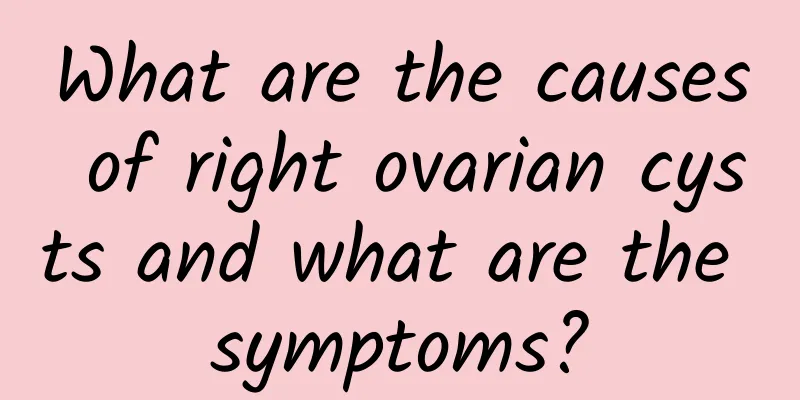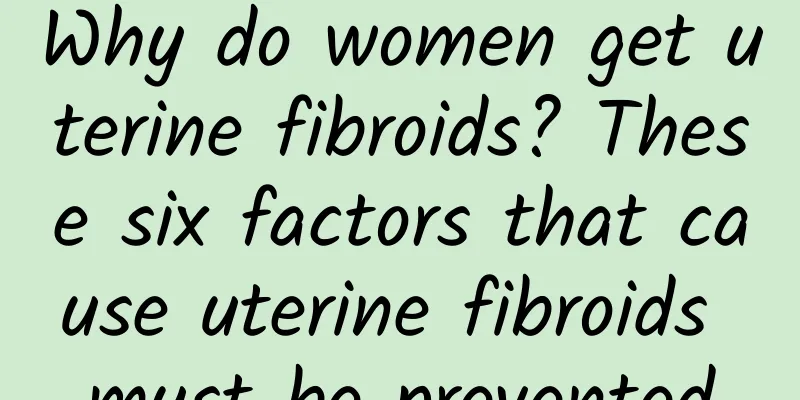What are the causes of right ovarian cysts and what are the symptoms?

|
What is the cause of right ovarian cyst and are there many symptoms? According to traditional Chinese medicine, the occurrence of ovarian cysts is mainly due to weak internal organs, strain of qi and blood, excessive emotions, invasion of wind, cold and dampness, blood stasis, weak kidney yang, condensation and qi stagnation, dysfunctional yin fluid dispersion, phlegm and blood stasis, phlegm and qi stagnation or paralysis. Traditional Chinese medicine uses different Chinese patent medicines to target different symptoms such as qi stagnation and blood stasis, condensed blood stasis, phlegm, blood stasis, etc. It can play the role of liver qi, promote blood stasis, detoxify heat, soften and disperse nodules. It can also comprehensively regulate female endocrine, promote blood circulation through qi and blood, improve the balance of yin and yang, and achieve the goal of completely curing ovarian cysts. The main causes of right ovarian cysts are as follows: 1. Environmental factors. Unreasonable diet structure, high cholesterol diet, vitamin A, C, E smoking, ionizing radiation and other environmental factors are related to the occurrence of ovarian cysts; 2. Endocrine factors. The incidence rate of non-pregnant women or non-pregnant women increases; early menstruation before the age of 12, menopause after the age of 50, frequent menstruation, ovulation promoters for more than three weeks, precocious puberty or virilization are also related to the occurrence of ovarian cysts; 3. Bad living habits. Bad living habits, excessive psychological stress and other factors lead to excessive acidification of the body, decreased overall body function, kidney deficiency, slowed metabolism in the lower abdomen, endocrine disorders, decreased immune function, and ultimately lead to ovarian cysts; The main symptoms of right ovarian cysts are abdominal pain, lower abdominal discomfort, increased vaginal discharge, yellow vaginal discharge, vaginal discharge odor, abnormal menstruation, usually a firm and painless swelling in the lower abdomen, and sometimes pain during sexual intercourse. When the cyst affects hormone production, symptoms such as irregular vaginal bleeding or increased hair growth may occur. If the cyst is torsion, there will be severe abdominal pain, abdominal discomfort, difficulty breathing, loss of appetite, nausea and fever. |
<<: What are the causes and symptoms of benign ovarian cysts?
>>: How to treat a molar pregnancy
Recommend
Can hypothyroidism cause premature ovarian failure?
Hypothyroidism refers to underactive thyroid glan...
Early symptoms of cervical erosion in women
Cervical erosion is also a type of gynecological ...
Good news for weight loss! FDA approves oral weight loss drug Belviq
Good news for those who want to lose weight easil...
How to prevent cervicitis?
Cervicitis is a common gynecological disease, and...
Learn about the symptoms of early cervicitis
The symptoms of early cervicitis are not easy to ...
What are the causes of vaginitis? Can I get vaginitis even if I don’t have sex?
Vaginitis is a common disease in the female vagin...
Is laser treatment for cervical erosion effective? Does laser treatment for cervical erosion affect fertility?
The female cervix is located in a special posit...
Purple pearl magic! Eating purple rice can help you lose weight, replenish blood, and fight aging... and there are other unexpected benefits
In recent years, there has been a wave of "p...
Is pelvic inflammatory tumor serious?
Pelvic inflammatory tumors are generally serious,...
What is the difference between bacterial vaginosis and vaginal candidiasis?
What is the difference between bacterial vaginosi...
Slow down your weight loss and lose weight without losing cup size
[Key Points]: The rapid weight loss method consum...
Comprehensive analysis of endometrial tuberculosis
Endometrial tuberculosis is an inflammation of th...
Must-learn tips for losing weight after childbirth! 3 tips on how to combine scissor kick exercise with diet to effectively get rid of belly fat
When it comes to losing weight after childbirth, ...
Is it necessary to take anti-inflammatory drugs before electrotherapy for cervical erosion?
Is it necessary to take anti-inflammatory drugs b...
Let’s learn more about the symptoms of cervicitis
Among gynecological diseases, the incidence of ce...









